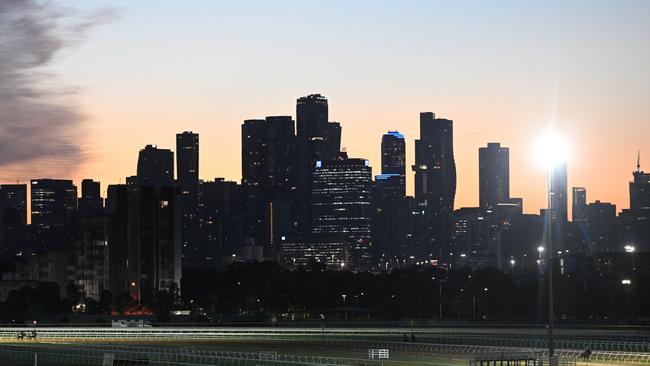Housing: Rate cuts, equity uncertainty help revive property play
The housing market is ripe with action, but there’s a new kind of investor - not the wealthier older Australian, rather the younger ‘rentvestor’.

Business
Don't miss out on the headlines from Business. Followed categories will be added to My News.
Sliding interest rates and a volatile sharemarket are combining to underpin a major shift back into residential property by Australian investors.
Investor loan growth is now regularly outstripping owner-occupier numbers.
The revival across the residential sector has yet to emerge clearly from official statistics,which are only published quarterly.
But key data collected by Loan Market, the nation’s biggest loan aggregator, shows residential lending is rebounding.
Spooked by a volatile sharemarket – and emboldened by housing grant incentives from both sides in the election campaign – investment conditions are highly attractive.
Although the Reserve Bank of Australia has so far only put through a single small rate cut – 0.25 per cent in February – the major banks are certain more rate cuts are coming soon.
CBA, the biggest player in the banking sector, is expecting three cuts, one cut per quarter in May, August and November, which will bring the cash rate to 3.35 per cent at the end of the year, from 4.35 per cent now.
This would bring mortgage rates closer to 5 per cent from 6 per cent now.
In fact, the banks are not waiting for the RBA to move.
The evidence is there for anyone to see in the Term Deposit market where the banks have effectively priced in three rate cuts already.
Money is clearly beginning to roll out of the sharemarket and across to residential property – especially in recent months as prices stabilise after three soft months over the summer period.
Recent figures from the CoreLogic group showed residential investment lending growing at its fastest rate since 2022.
Now the Loan Market data backs this up. Figures to the end of March suggest overall growth year on year in investment lending hit 18 per cent, while owner-occupied grew by 14 per cent.
Meanwhile, sudden upswings or downswings in sharemarkets do little to engender confidence – the ASX is down 3 per cent year to date, while the US market’s S&P 500 is down more than twice as much at about minus 7 per cent (even after this week’s relief rally).
In contrast, the fundamentals of the residential market remain strong with tight supply across the market and rental vacancy rates continuing to hover around one per cent – a level at which just about any property will be rented relatively quickly.
Throughout last year the dominant theme across the residential sector was that Melbourne – the weakest city in the national market - would inevitably attract investors, while Sydney and Queensland, which had seen relatively strong growth, would see prices flatten.
Property analysts are expecting a nationwide lift in prices of around 5 per cent this year.
The pattern so far suggests Melbourne has not turned the corner – a positive blip where prices moved 0.7 per cent over the month of February was almost completely driven by owner occupiers.
So where are investors putting their money?
David McQueen, the CEO of Loan Market says: “There is clearly no lack of demand, and people are looking for somewhere safe to put their money.”
“The investment lending sector is reviving, and that is typically what you will see when you start to see interest rate cuts – you must bear in mind that people have been talking about these interest rate cuts for quite a while, and investors have been trying to get ahead of the curve here.”

In Sydney, the latest data shows lending growth to investors completely outstripping owner occupiers across the city. Looking at the trend data over the last two years, investors utterly dominate the landscape in coastal suburbs.
Property analysts suggest that prices are now so high in these areas that owner occupiers have simply been shoved to one side – the median price in Sydney is already over $1.1m.
Moreover, many of the new investors – especially in the apartments market – do not equate with the traditional picture of a wealthier older Australians – rather they are ‘rentvestors’ – younger Australians unable to buy a home and using negative gearing to get a foothold on the property ladder through buying an investment property.
But in Melbourne, lending activity has been depressed – the numbers are negative for the city and investment numbers are worse than owner-occupier numbers.
“There is clearly a lack of confidence across Victoria with some of the changes that the state government has made,” says McQueen.
Victoria has come under fierce criticism for a lengthy and unpredictable rollout of new property taxes, which now amount to 10 separate taxes aimed at the property investor.
The state also has the best supply of residential property in the country, which is good news for first-home buyers and owner occupiers, though less so for investors.
“It’s not that Victorians are no longer investing in property… they are. It’s just that they are doing it in different states, such as Queensland.”
Originally published as Housing: Rate cuts, equity uncertainty help revive property play




